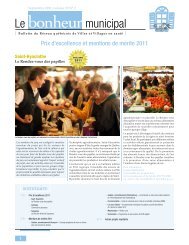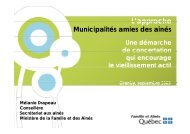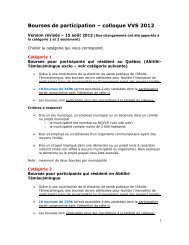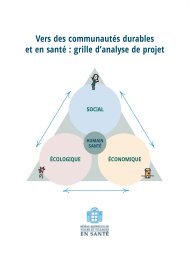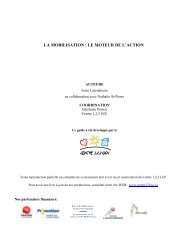Download It
Download It
Download It
- No tags were found...
Create successful ePaper yourself
Turn your PDF publications into a flip-book with our unique Google optimized e-Paper software.
climate change. Heat contributes to an average of 120 premature deathsper year in Toronto and the likelihood of mortality increases on each dayof a heat episode. 41 As Toronto experiences hotter days and longer heatepisodes, the impact of heat on health is expected to increase. Certainpopulations, such as the frail, elderly and isolated, are more vulnerable toheat than others.The way we plan, designand build our citiesinfluences our healthBuilt EnvironmentThe World Health Organization (WHO) and the United States Centersfor Disease Control and Prevention (CDC) are among the manyinstitutions that have recognized that the way we plan, design and buildour communities can influence our health. 42,43 There is a connectionbetween the built environment and factors influencing our health such asphysical activity, injuries, nutrition, air pollution, water quality, risk oftraffic collision, and community social networks. 44Many of the health effects of the built environment are related to theheavy reliance on automobiles as a result of sprawling development. 45Dispersed, low-density, single-use (that is, separation of residential,commercial, and employment areas) land uses mean that people have totravel further, often requiring the use of automobiles to get to work andschool, to shop, and to access services and recreational opportunities.Areas that are more dense,walkable, connected, andclose to a mix of servicescan encourage physicalactivityLand use and urban design characteristics can influence physical activityby encouraging or discouraging walking, biking, playing in parks,driving cars or taking public transit. Physical inactivity and obesity are asignificant health and economic burden. The direct and indirect costs inCanada were estimated to be $5.3 for physical inactivity and $4.3 billionfor obesity. 46 Individuals who live in more walkable areas, with greaterland-use mix, residential density, and street connectivity, are more likelyto be physically active 47,48 and less likely to be obese or overweight. 49These types of neighbourhoods are also associated with higher levels ofsocial and community engagement (that is, social capital), which isassociated with more positive health outcomes. 50Building Walkable CitiesThe Toronto Pedestrian Charter is an initiative of the TorontoPedestrian Committee. The Charter reflects the principle that acity's walkability is one of the most important measures of thequality of its public realm, and of its health and vitality. This is thefirst pedestrian charter in North America, and the first approved by amunicipality anywhere. The Charter was intended to serve as areminder to City and community decision-makers that walkingshould be valued as the most sustainable of all forms of travel, andthat it has enormous social, environmental and economic benefitsfor the city. The Federation of Canadian Municipalities namedToronto’s Walking Strategy, adopted in 2009, as the besttransportation plan in Canada.Healthy Toronto by Design | Toronto Public Health, October 20118



